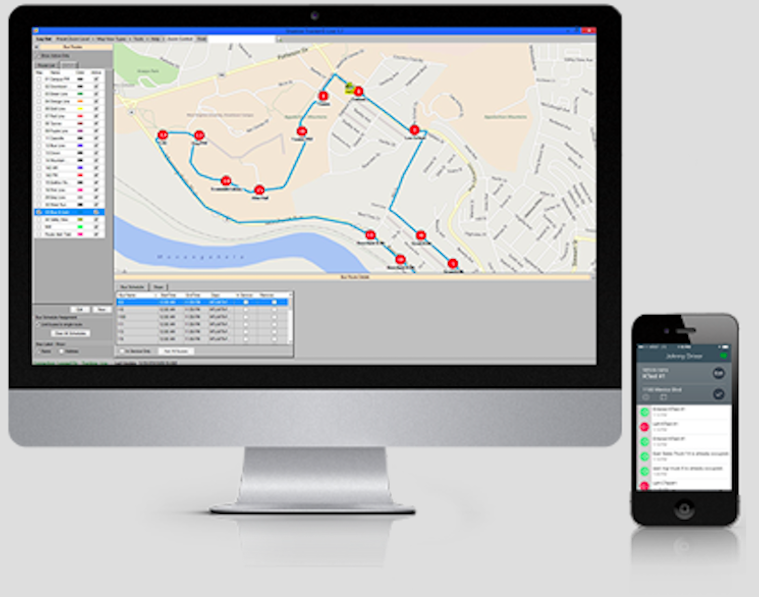Case Study: Increasing Profitability Through Driver Accountability

When landscape company and lawn maintenance work crews drive service vehicles from job to job throughout the day, how much can unauthorized long lunches, side trips, and other breaks cost the company?
The answer can be surprisingly high. However, improving driver accountability via GPS tracking devices can dramatically improve not only productivity but also profitability.
Greg Hamman, owner of Prime Landscape Services, a Dallas-Fort Worth, Texas-based landscape contractor, estimates that if unauthorized employee breaks went unchecked when he first discovered them at his firm years ago, it would cost more than $150,000 annually just on the lawn maintenance side of his business today.
“The crews were telling us they were taking 30-minute lunches, but were really taking hour-long lunches,” said Hamman, whose company provides landscape design, lawn maintenance, sprinkler systems, water features, pool and concrete services. Currently, the landscape contractor has about 20 lawn maintenance crews serving north Texas, and a total of about 55 service vehicles companywide.
“We also had guys stopping by their homes in our trucks,” added Hamman. “We had drivers going to stores, or hanging out at a buddy’s house after dropping off the laborers at a job.”
Hamman has turned that all around with the installation of GPS tracking devices on his service vehicles. “We have really great guys. However, I believe in trust but also in verification,” he said. “Today, we’re probably realizing a net positive of hundreds of thousands of dollars annually companywide in greater productivity, safety, and efficiency with the GPS trackers.”
When Prime Landscape Services first installed GPS tracking devices from Advanced Tracking Technologies (ATTI) on a few vehicles about 15 years ago, the technology was not as sophisticated as it is today. However, even back then, the effect was still dramatic.
“Once we put trackers on the trucks and everyone knew it, the shenanigans stopped,” said Hamman. “The system was clear, unbiased, and provided accountability. So, our work crews mostly self-corrected, and there has been no need to micro manage.”
According to Hamman, the printable report he uses shows every customer address.
He matches this with the route list used for billing, and the two should match. “If we hand our foremen a 20-yard job list, at the end of the day there should be 20 stops indicated by the tracker. It shows everything, including how long they are taking for lunch and every break,” he said.
Recently, Hamman began using an advanced GPS vehicle-mounted tracking device, which he has continued adding to his fleet. He has found a range of valuable uses, including improving driver safety, expedited theft recovery, emergency dispatch, and of course better driver accountability and managerial oversight.
The device provides real-time location updates every 10-seconds, as well as location, speed and idle time alerts if something is amiss. This data is transmitted via satellite and cellular networks to a smartphone or PC on a 24/7 basis. The system has access to nationwide speed limits in its database.
“The GPS tracker can tell you when a truck is speeding, so you can hold the driver accountable and prevent future occurrences,” said Hamman. “You don’t want a truck and a trailer going over sixty miles an hour. That’s a huge liability. If your drivers speed and get in a fatal wreck, the litigation can cost you your business.”
Once, when a $60,000 dollar truck with $30,000 of equipment was stolen, the truck was recovered by police the same day using the tracker, according to Hamman.
The GPS trackers also enable Prime Landscape Services to quickly respond to anything urgent, which can help build customer loyalty.
“If we get a call to do an emergency water shutoff in Dallas, for instance, we can look at our trucks on the tracker map, and then immediately dispatch the closest available truck,” said Hamman.
According to Hamman, via a smartphone app he can display the real-time location of his entire vehicle fleet on a map, and zoom in on any specific truck. At a glance, he can see if a truck is moving (displays green) or stopped (displays red). If he touches a truck icon, the app will display where the truck has been, where it stopped, and how long it has idled. All this helps with customer support, and with on-the-fly coordination.
“I can pull up my smartphone and see exactly where my trucks are in route, if they’re picking up material, or stuck in traffic,” said Hamman. “So, I can tell a customer almost to the minute how soon a truck will arrive. I can also sit in the office for an extra hour and do billing or call customers while my crew is out getting materials, and then meet them right when they arrive at the job.”
Hamman has also recently discovered how the GPS system can streamline billing.
“Normally, our staff would be in the office until 9:00 PM handling billing after the last trucks came in,” says Hamman. “Now, with real-time tracking, we know exactly how long the trucks were at each jobsite and if they missed any jobs. So, we can start the billing at noon and be almost done by the time the trucks come in.”
Despite using GPS trackers for more than a decade, Hamman and his staff are still learning new ways to enhance productivity, safety, and profit with the devices.
“The advanced units are the best yet, and we are really just scratching the surface of what we can do with them,” he said.
Article provided by Advanced Tracking Technologies (www.advantrack.com).


